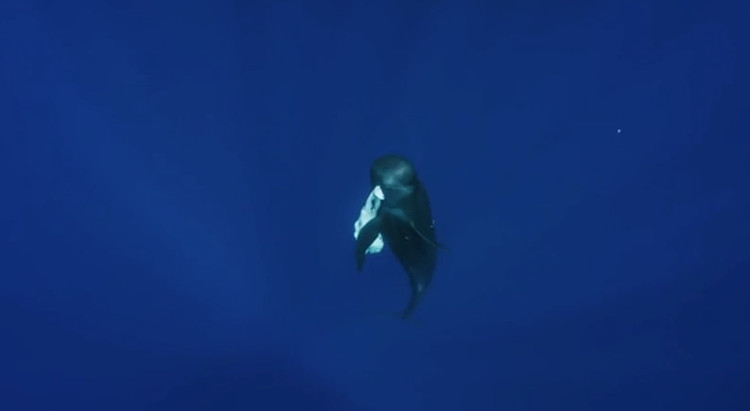Dolphins and whales cultivate the juveniles for many days
Dolphins and whales are caught carrying the dead baby on their side for a long time to protect the body from predators.

Whale bites the baby's dead body when it is born in the mouth.
The team at the Dolphin Biology and Conservation in Cordenons, Italy, analyzed 78 notes on how to handle homosexuals from 1970 to 2016, according to Long Room. More than 90% of dolphins in the study took care of the dead offspring, of which the number of children with grief accounted for 3/4.
The mother whale bites the newborn baby.(Video: BBC).
For example, a killer whale has the nickname L72 off the island of San Juan Island, Washington, grabbing the corpse of a dead baby when born in the mouth."It tries to keep the corpse of the baby near the water all the time, to balance it at the top ," said Robin Baird of Cascadia Research Collective in Olympia, Washington, co-author. Many reports recorded whales taking the baby's body, pushing it forward in the water and using its fins.
In 75% of cases, adult children take care of the baby's corpse, some preserve the decomposing body of the young throughout the week. This behavior usually includes one or two other individuals involved in the body. They try to keep the animal's body floating on the water, even trying to wake it up.
Dolphins grief over the body.(Video: Vimeo).
In the article published in the journal Zoology on May 9, the team explained this behavior may be due to "deep attachment that leads to difficulty leaving." According to them, the hard-working behavior after death (PAB) results from the fact that the animal cannot recognize or accept the offspring or its companion is dead.
PAB was recorded in 20 of 88 marine mammal species. Researchers believe that PABs are more common in dolphins because they have a higher brain mass and a higher sociality than whales. They still do not know whether marine mammals are really aware of death and plan to proceed further. The team identified reactions that could be a way of expressing stress stemming from emotional attachment.
- Amazingly, dolphins receive whales
- Whales and dolphins are at risk of perishing
- Whales suffer from the death of their fellow human beings
- The chaotic dolphin fled when the killer whale ambushed
- Aerial performance of
- Why do whales 'commit suicide' series?
- Why are whales and dolphins hissing?
- 30 dolphins stranded in Brazil
- Discover new hybrid creatures between dolphins and whales
- Design wind turbines based on whales and dolphins
- Dozens of whales are stranded on the coast of New Zealand
- Whale whale in Norway
 Surprised: Fish that live in the dark ocean still see colors
Surprised: Fish that live in the dark ocean still see colors Japan suddenly caught the creature that caused the earthquake in the legend
Japan suddenly caught the creature that caused the earthquake in the legend A series of gray whale carcasses washed ashore on California's coast
A series of gray whale carcasses washed ashore on California's coast Compare the size of shark species in the world
Compare the size of shark species in the world